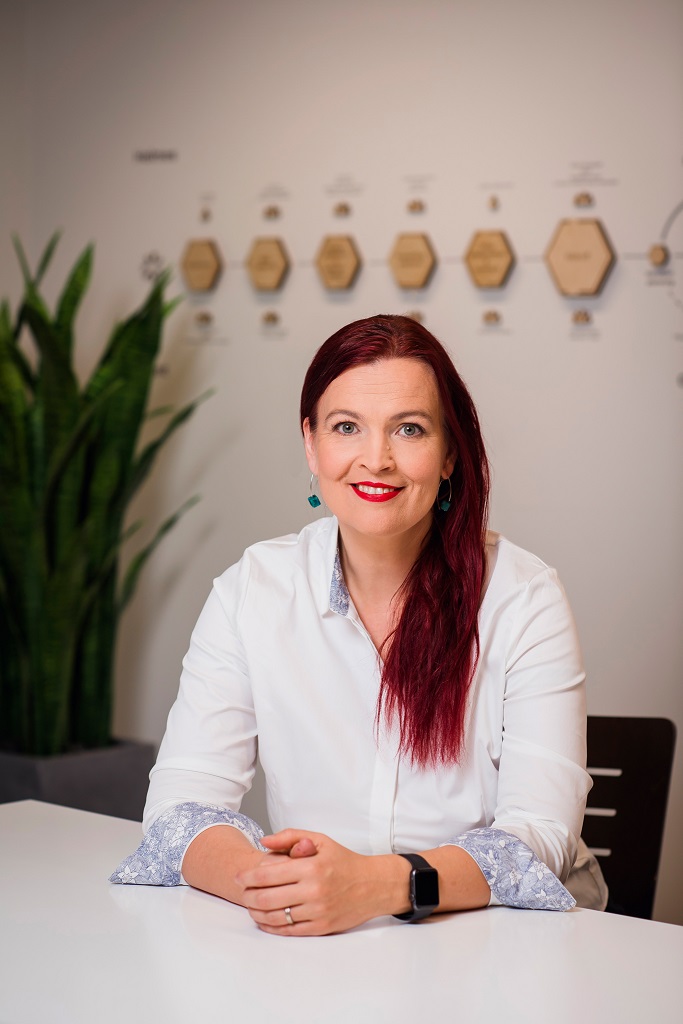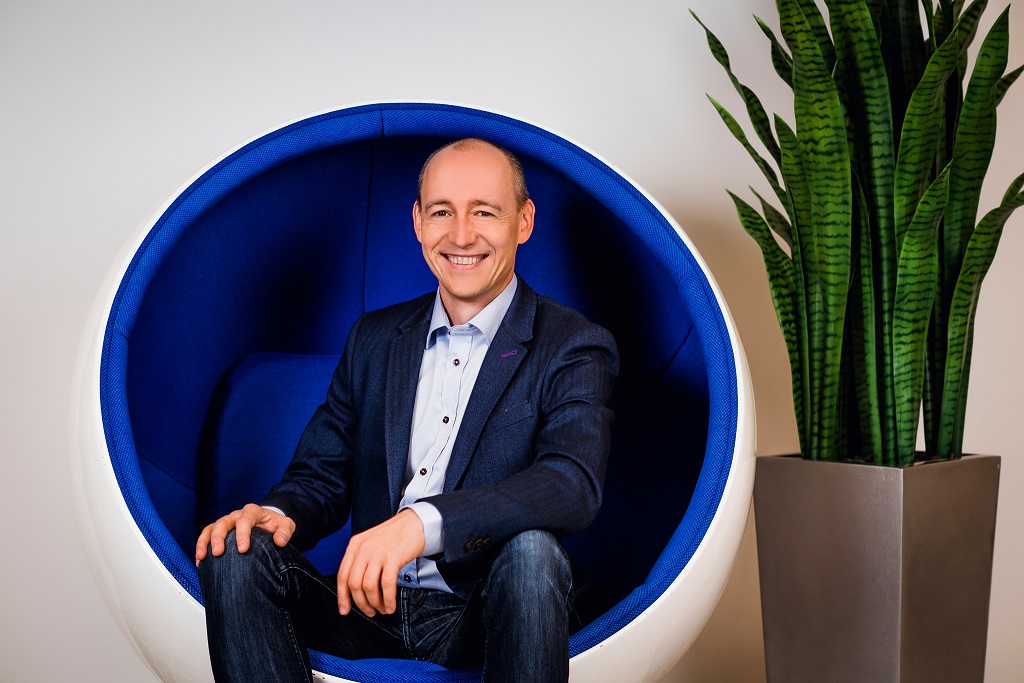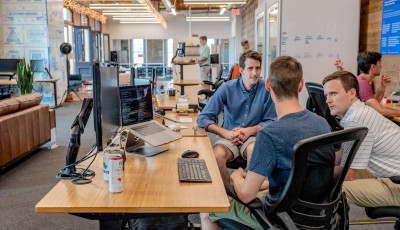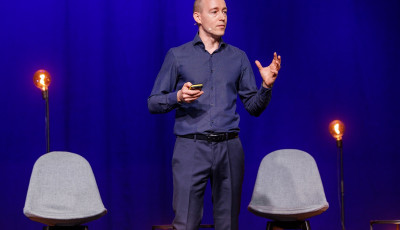For the past two decades, our way of working at Helmes has been rooted in autonomy at both the individual and team levels. But what does it mean, and what are the practical takeaways from our experiences for other organizations and leaders? Meelis Lang, Chief Innovation Officer at Helmes, shares our successes and failures.
Meelis, how would you like to introduce yourself?
I’ve worked in the IT sector for the past 30 years, first as a software engineer, analyst, architect, and project manager, then as a business manager and COO. Although my official job title is Chief Innovation Officer, I like to call myself a ’success scientist.’ I like to learn, share, and inspire. My motivation is simple – I want things to improve on every level.
You could also say that I am an engineer who loves people. My role is to develop the company, but my focus is on people. Contrary to a common belief, Helmes is not in the IT business but in the people business. We work with people for the people – our people just happen to be experts in technology.
The business model of Helmes is to build world-class software development teams who develop business-critical solutions for industry-leading companies.
Our competence lies in building the best teams that combine up to nine different roles – professionals with different profiles – who must be able to collaborate with each other and the client.
Smart collaboration is key to success, while technology is just a tool to solve a specific problem.
How did your journey as a success scientist start?
I joined Helmes as a Senior Developer in 2001, shortly after it launched its software development business. Until then, Helmes had offered companies a service for hiring IT specialists. Now we switched to delivering projects, which meant we needed to build project teams.
While only a specialist back then, it bothered me that everyone spoke about financial results, but no one asked why certain project teams succeeded and others didn’t. We achieved great results with our team, so I started to speak out on the topic. I began to consciously learn about the success factors – how to build teams, and manage projects and customer relations.
That was the main thing I sought to change because good financial results can come at the expense of the employees or the client. We had always been efficient, but now we started measuring client satisfaction and team satisfaction to make sure efficiency doesn’t come at anyone’s cost.
How was the Helmes team model born?
At the end of the 2000s came the financial crisis, which was a time when we had to make difficult decisions. We took it as an opportunity to create something new and better.
So we did two things.
Firstly, we defined new organizational values and key performance indicators, and secondly, we created a new team model, shifting from project-based teams to autonomous business units. In Helmes, each team is like a small company responsible for its results and well-being.
It was not an easy transformation. Over the next two years, about half of our project managers who didn’t align with the new approach left. Their departure was entirely value-based.
Next to financial results, we now placed the human dimension. Does the leader care about their people? Do the team members care about themselves and the client’s success? The people who stayed did so, which allowed us to implement the new model. The seeds of autonomy got planted, and the hockey stick effect could kick in – things have only gotten better since then.
Let’s talk some more about the Helmes model of autonomy. How does it work in practice?
The way I see it, autonomy is not free-range chicken rearing. In some organizations with less experienced leaders, I’ve seen it lead to smart people running around lost, not knowing what to do, burning money, and not delivering results. But this is not smart, effective, or goal-oriented.
What we have learned at Helmes is that freedom comes with responsibility. You need a smart framework to create a self-balancing system. So we have our values as the foundation and three key indicators as guardrails for autonomy.
The three key indicators we measure are financial results, team engagement and well-being, and client satisfaction. Team engagement reflects the team’s happiness and people’s growth, while client satisfaction depends on the value provided to the client, paving the way for continued collaboration. This is the framework at the center of which lies almost complete freedom.
If one key indicator goes red, the team leader has three to six months to fix the situation. We ask what their plan is, how they are doing, and if they need any support but only intervene if things have not improved so that people would not suffer.
As to our values, these are not just words on the wall but decisions and actions. We have described our values as a list of observable behaviors. This way, everyone can understand what they look like in action – for instance, that caring also means taking care of oneself, one’s health, and well-being.
Does autonomy work for everyone?
We are creatures of habit. If you have been raised in an autocratic culture where you cannot trust people, then it will not work. It also depends on whether we’re discussing leadership under normal or extreme conditions. In a crisis, we often need more hands-on leadership; there is no time to explain things.
We have some principles but very few rules in Helmes, which is something that doesn’t always work in other cultures. In top-down hierarchical cultures, if we say we don’t have rules but instead three key indicators and values, some people ask, “What does it mean? Tell me what I can or cannot do.”
Some leaders may also say that no values exist, only rules, in which case autonomy doesn’t work – this creates a dilemma. Therefore, even though all our units are autonomous, some teams in some countries are more rules-based.
If the culture and people are not yet ready, you cannot tell them, “You can do anything.” We’ve had our lessons in the past where the team or client satisfaction has been “bought” using fear or bonuses.
How do you set goals inside the team?
We don’t set growth goals at the team level. We have benchmark teams that set a healthy standard for other teams with similar configurations. There is a limit to how many people a leader can lead sustainably: typically around 5-9 in complex teams and 7-15 in simpler teams. So we know the optimal team size and healthy ratios of people to a key role.
When the team has reached an optimal size, they continue upgrading the quality and effectiveness and move upwards in the value chain for the client. The improvement inside the team never ends, so the same team can successfully collaborate and evolve over 10 or more years.
We agree on business growth goals on the business unit level. Yet we always understand that real life may differ from projections. The sales cycle in our industry can be up to two years, resulting in work for 100 people for the next 10 years.
In short, we set business unit goals and strive towards healthy, happy, and autonomous teams. Sometimes we need to split the team to create a new team, in which case we want to provide the necessary support to keep their underlying DNA intact and support the transition of a team leader into a business unit leader.
What does the Helmes model mean for leaders?
We have arrived at our way of working through testing what works and what doesn’t. But there are some books supporting our approach that we ask all our leaders to read, such as Drive by Daniel H. Pink and First Break All the Rules by Marcus Buckingham.
We are continuously running in-house leadership training programs for new leaders. A compulsory part of our program is self-awareness training to understand your uniqueness as a leader, how you impact others, and how others see you. People can choose when they join this training and how deep into it they want to go with it, but it’s a must for all leaders.
Because to be a successful leader, you need first to know yourself and, second, your team. One way to think about it is jobs-to-do or which functions and activities we must perform. However, autonomy at an individual level means I can choose when, how, and with whom I carry out those tasks. And autonomy at the team level means that we as a team can choose that.
Also, I have learned and seen it in others – good leadership takes time. If we don’t have time, we keep pushing and pushing people, which is not sustainable. So we need to plan for this time. I always ask, “Do you have time to be a good leader?”
How else do you support team members so they can thrive?
Our principle is that as a specialist, you don’t need to sweat over doing meaningless work or do things you’re not good at. It’s quite common for a specialist to think that you need to solve every task and the only resource is your desk and computer. In Helmes, we invite business thinking, and value courage to speak up. Every autonomous team has the resources and power to decide how you work, what tools you use, and what work to outsource. So every individual can focus on their strengths and doing meaningful work.
Then, there is the question of mastery and what happens if you grow out of your role. I’ve stayed at Helmes for 20 years because on three occasions when I’ve pondered, “What is there left for me to do?”, I’ve gone to Jaan Pillesaar, CEO of Helmes, who has given me a sheet of paper, saying, “Write what you’d like to do.” Then, we discussed how this benefits the organization, how we can measure it, and if I will still be satisfied after six months.
I believe everyone is unique and want every person to know what makes them happy and successful in Helmes. We invite whole teams to take a deep dive into self-awareness and talent-discovery to find out what makes them special, and how to aim their power. The autonomous team model allows one to tailor each role according to their unique talents. For the past five years, we have been moving towards this strengths-based leadership approach which we believe provides the best opportunity for every team member to thrive.
What have been your biggest insights from applying the Helmes model?
We had eight years of ongoing experiments before the economic downturn gave us the nudge and opportunity to kick-start a radical change. During this time, we learned that a successful and sustainable autonomy needs guard rails and a North Star that would guide the people and teams and allow them to self-balance.
Second, the selection of people is critical. We did a study with Aalto University as part of my EMBA studies about what differentiates good teams from great teams. We found that the key factor is the team leader – they are the biggest leverage and create the strongest positive and negative impact. Team leaders can select people, manage money, and ask for extra resources. If these persons are selected well, autonomy works. Not all people are cut for the role.
Third, the cultural and value space matters. We cannot implement our model of autonomy in every cultural space yet. Some people might be ready, but most are not, so you must be aware of these cultural differences and adapt.
As a company, we want to be the best partner for our team members and clients’ business – the Helmes model builds on this goal.
Contact us
Get in touch! Contact any of our people or drop us a line at info@helmes.com. Let’s discuss your software development plans.
Get in touch




